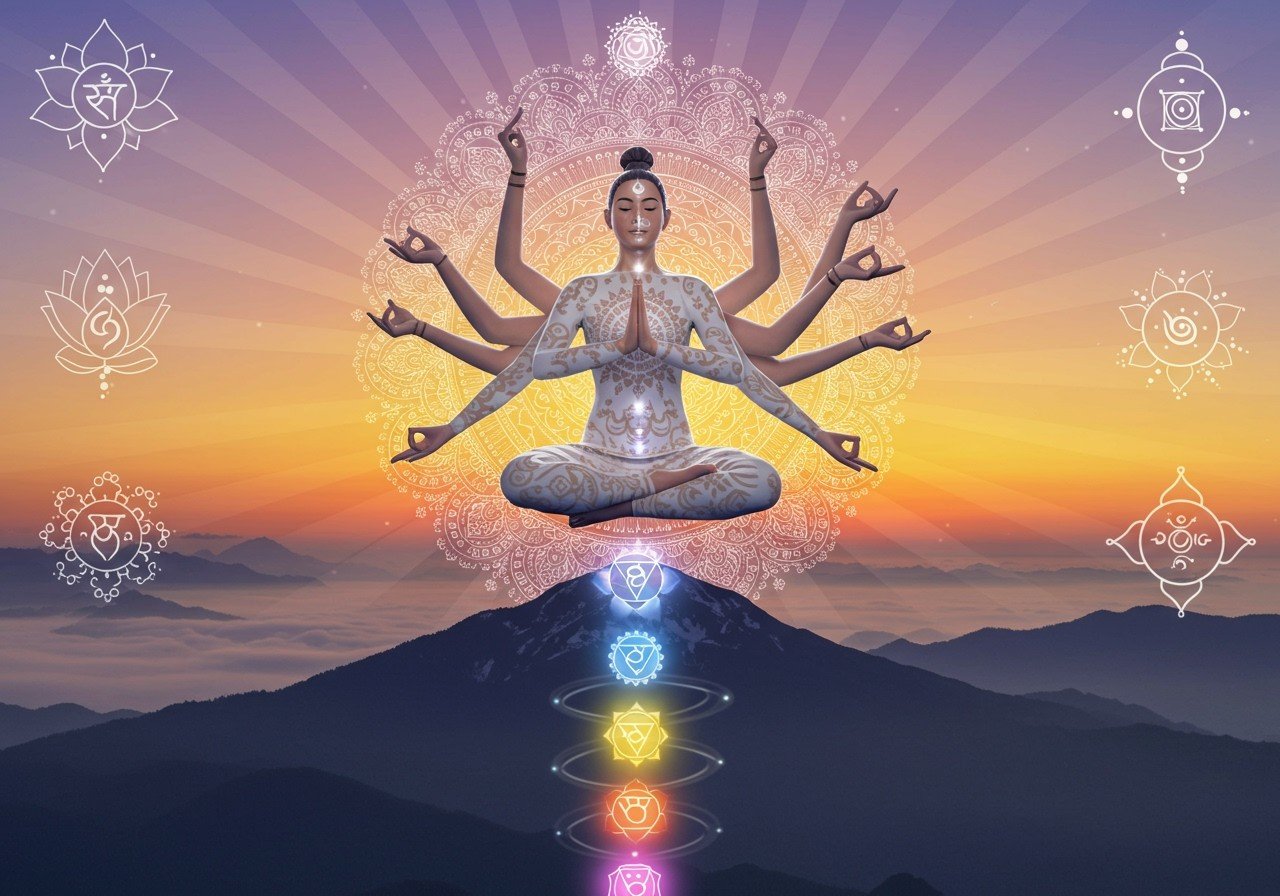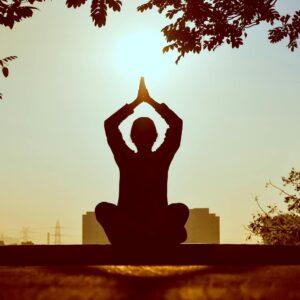
Indian philosophy and yoga have been intertwined for millennia, offering a rich tapestry of wisdom and practices that promote holistic well-being. This guide provides practical insights into how these ancient traditions can be understood and applied in contemporary life. By exploring the philosophical foundations of yoga and its practical applications, readers can gain a deeper appreciation of its relevance and benefits. This guide is particularly designed for culturally rooted individuals who value tradition and seek authentic lifestyle practices.
Historical Context of Indian Philosophy and Yoga
Origins and Evolution
Yoga’s origins trace back to the Vedas, the ancient scriptures that form the bedrock of Indian philosophy. These texts, dating back to 1500-500 BCE, laid the groundwork for spiritual practices that have evolved over centuries. As history progressed, yoga developed through influential texts like the Upanishads (800-500 BCE), Bhagavad Gita (around 500 BCE), and Patanjali’s Yoga Sutras (around 400 CE). Important figures such as Patanjali, Shankaracharya (788-820 CE), and Vivekananda (1863-1902) played pivotal roles in shaping and spreading these philosophies. Explore more about the Vedas in this insightful article: Vedas: Ancient Wisdom for Modern Life – Practical Applications.
Yoga seamlessly integrated into daily life in ancient India, blending spiritual and physical practices. This integration made yoga a holistic approach to well-being, influencing both personal and community life. This holistic approach is also mirrored in Ayurveda. Delve deeper into the connection between these two ancient practices with this article: Yoga & Ayurveda: A Holistic Wellbeing Approach.
The Six Schools of Indian Philosophy (Shad Darshanas)
Indian philosophy is categorized into six orthodox schools of thought, known as the Shad Darshanas. These schools, while distinct, share the common goal of Moksha (liberation) and offer unique perspectives on achieving it. They continue to influence modern Indian thought and spirituality, providing a rich framework for understanding existence and the nature of reality. Understanding these schools is crucial for anyone seeking a deeper understanding of yoga’s philosophical underpinnings. To learn more about Hinduism and its diverse traditions, check out this article: Hinduism: A Celebration of Diversity and Tradition.
- Nyaya (Logic and Reasoning): This school emphasizes logic, epistemology, and the process of acquiring valid knowledge. Its foundational text, the Nyaya Sutras by Gautama (around 2nd century CE), delves into the methods of reasoning and understanding the world around us. Nyaya provides a framework for critical thinking and discerning truth from falsehood.
- Vaisheshika (Atomism and Metaphysics): Vaisheshika explores the nature of reality, focusing on the concept of atoms and the fundamental constituents of the universe. It complements Nyaya by providing a metaphysical foundation for understanding the objects of knowledge. Together, Nyaya and Vaisheshika offer a comprehensive system for understanding knowledge and reality.
- Samkhya (Dualism and Nature of Reality): Samkhya explains the dualistic nature of reality, distinguishing between Purusha (consciousness) and Prakriti (matter). This school delves into the interplay between these two fundamental principles and how they contribute to the manifestation of the universe. It provides a framework for understanding the relationship between the self and the material world.
- Yoga (Practice and Liberation): Based on Patanjali’s Yoga Sutras, this school emphasizes practical methods for achieving liberation through disciplined practice. It outlines the eight limbs of yoga (Ashtanga Yoga) as a path to self-realization and freedom from suffering. Yoga philosophy provides a roadmap for personal transformation.
- Mimamsa (Ritualism and Interpretation of Vedas): Mimamsa focuses on the correct interpretation of the Vedas and the performance of rituals. It emphasizes the importance of Dharma (righteous conduct) and the role of rituals in achieving spiritual goals. This school provides a framework for understanding the practical application of Vedic teachings.
- Vedanta (Non-Dualism and Ultimate Reality): Vedanta centers on the study of the Upanishads and the concept of Brahman, the ultimate reality. It emphasizes the non-dual nature of reality and the interconnectedness of all beings. Vedanta offers a profound understanding of the self and its relationship to the divine.
Fundamentals of Patanjali’s Yoga Sutras
Patanjali’s Contribution
Patanjali’s Yoga Sutras are central to yoga philosophy, outlining the eight limbs known as Ashtanga Yoga. This eight-fold path provides a comprehensive framework for achieving holistic well-being and spiritual growth. Each limb builds upon the previous one, creating a progressive journey towards self-realization. Understanding these limbs is essential for anyone seeking to deepen their yoga practice.
- Yama (Ethical Restraints): These are ethical guidelines for interacting with the world, including non-violence (Ahimsa), truthfulness (Satya), non-stealing (Asteya), continence (Brahmacharya), and non-possessiveness (Aparigraha). These principles form the foundation of a moral and ethical life.
- Niyama (Personal Observances): These are personal practices for self-discipline and purification, including cleanliness (Saucha), contentment (Santosha), austerity (Tapas), self-study (Svadhyaya), and surrender to a higher power (Ishvara Pranidhana). These observances cultivate inner peace and self-awareness.
- Asana (Physical Postures): These are physical postures designed to promote strength, flexibility, and stability. Asanas prepare the body for deeper practices like pranayama and meditation. Poojn.in provides a wide range of yoga accessories to support your asana practice. Discover our collection here: Gongadi Asan (Kambalasan): Sheep Wool Asan for Puja & Meditation.
- Pranayama (Breath Control): These are breathing techniques that regulate the flow of prana (life force energy). Pranayama cultivates a calm and focused mind, preparing for deeper meditative states. Discover our range of incense and dhoop to enhance your pranayama practice: Alta Pata: Pata Alta for Puja Purpose.
- Pratyahara (Withdrawal of Senses): This involves withdrawing the senses from external stimuli, directing attention inwards. Pratyahara helps to quiet the mind and cultivate inner awareness.
- Dharana (Concentration): This involves focusing the mind on a single point or object. Dharana develops mental focus and concentration, essential for meditation.
- Dhyana (Meditation): This is a state of deep absorption and contemplation. Dhyana cultivates inner peace and tranquility, leading to a deeper understanding of the self.
- Samadhi (Absorption): This is the ultimate state of yoga, characterized by a profound union with the divine. Samadhi represents the culmination of the yogic path, leading to liberation and self-realization.
Practical Applications of Yoga Philosophy
Incorporating yoga principles into daily life can be transformative. By integrating ethical guidelines, practicing asanas and pranayama, and cultivating a regular meditation practice, individuals can experience significant improvements in their physical, mental, and spiritual well-being. These practices are not confined to the yoga mat but can be integrated into every aspect of life, fostering a more balanced and fulfilling existence. Find out more about mantra chanting and its healing power here: Mantra Chanting: Sound Vibration & Healing Power.
- Yamas and Niyamas: Integrating ethical guidelines like non-violence (Ahimsa) and truthfulness (Satya) into daily interactions can foster more harmonious relationships and a stronger sense of integrity. These principles provide a moral compass for navigating life’s challenges with compassion and wisdom.
- Asana Practice: Regular physical postures enhance physical health, improve flexibility and strength, and promote mental clarity. Asanas can be adapted to suit individual needs and abilities, making them accessible to people of all ages and fitness levels. Enhance your practice with authentic yoga accessories from Poojn.in.
- Pranayama: Simple breathing exercises can be integrated into daily routines for stress relief and improved focus. Even a few minutes of conscious breathing can have a profound impact on mental and emotional well-being. Explore our range of incense and dhoop to create a calming atmosphere for your practice.
- Meditation: Develop a regular meditation practice to improve mental well-being, reduce anxiety, and cultivate inner peace. Meditation can be practiced anywhere, at any time, making it a powerful tool for managing stress and enhancing self-awareness. Create a sacred space for meditation with our selection of meditation cushions and altars.
- Pratyahara: Achieve sensory withdrawal in our technology-driven world by setting aside time for introspection and disconnecting from external stimuli. This practice allows for deeper self-reflection and cultivates a greater sense of presence.
The Role of Rituals and Traditions
Rituals and traditions are integral to Indian philosophy and yoga. They provide a framework for spiritual practice and connect individuals to a rich cultural heritage. Daily rituals like morning prayers, meditation, and yoga foster discipline and spiritual growth, while traditional practices such as Ayurveda complement yoga, promoting holistic health. Discover more about Hindu rituals and their significance: Hindu Rituals: A Guide to Coping with Grief and Loss.
Festivals reflect yoga principles, enhancing community bonds and celebrating shared values. Sacred objects like malas, incense, and altars enrich spiritual practice, creating a sacred space for connection and reflection. Family support strengthens spiritual journeys, providing encouragement and understanding along the path. Poojn.in offers a wide selection of authentic ritual items and spiritual goods to support your practice. Browse our collection to find everything you need to create a sacred space in your home.
Modern Adaptations and Misconceptions
Yoga has seen commercialization in modern times, leading to some misconceptions about its true nature and purpose. Authentic yoga is more than just physical exercise; it encompasses physical, mental, and spiritual well-being guided by Patanjali’s Sutras. Understanding the philosophical foundations is crucial for a deeper and more meaningful practice. Respecting cultural roots ensures authenticity and avoids the pitfalls of superficial interpretations. Seek credible sources and teachers to learn yoga genuinely and experience its transformative power. Integrating traditional practices with modern needs can provide a balanced approach to well-being, fostering lifelong learning and growth.
Poojn.in: Your Partner in Spiritual Growth
Poojn.in, India’s leading online store for cultural and spiritual goods, offers a wide selection of products to support your yoga and meditation practice. From high-quality yoga mats and meditation cushions to traditional puja items and sacred texts, we have everything you need to create a sacred space in your home and deepen your spiritual journey. Our commitment to authenticity ensures that you receive genuine products that honor the rich traditions of Indian philosophy and yoga. Explore our collection today and discover the tools to enhance your practice and connect with your inner self.
- Small Beads Bel Mala: Bel ki Mala, Bael Mala, Bili Bhel Wood Chain (3 Round, Set of 2 Pieces)
- Tulsi Mala with Radha Locket: Sngel Piece, 100% Original Tulsi Wood Locket, Handmade from Tulsi Wood Chain
- 28 Batti / 28 Diya / 28 Pradeep for Arati Pure Brass 17\” Height Arati Diya / 28 Lamp Aarti Diya
- And many more products to support your spiritual journey.
Conclusion
Indian philosophy and yoga offer timeless wisdom for holistic well-being. By embracing these practices with respect and curiosity, one can achieve physical, mental, and spiritual harmony. Yoga is not merely about physical postures; it is a profound journey that connects the body, mind, and spirit. Integrating the principles of Indian philosophy into daily life can lead to personal growth and a deeper understanding of oneself.
As you embark on your yoga journey, remember to honor the traditions and teachings that have been passed down through generations. Create a sacred space in your home, practice regularly, and seek guidance from authentic sources. By doing so, you will not only enhance your well-being but also stay connected to the rich cultural heritage that yoga and Indian philosophy represent. In today’s fast-paced world, yoga offers a sanctuary of peace and balance. Let these ancient practices guide you towards a life of fulfillment, health, and inner peace.


